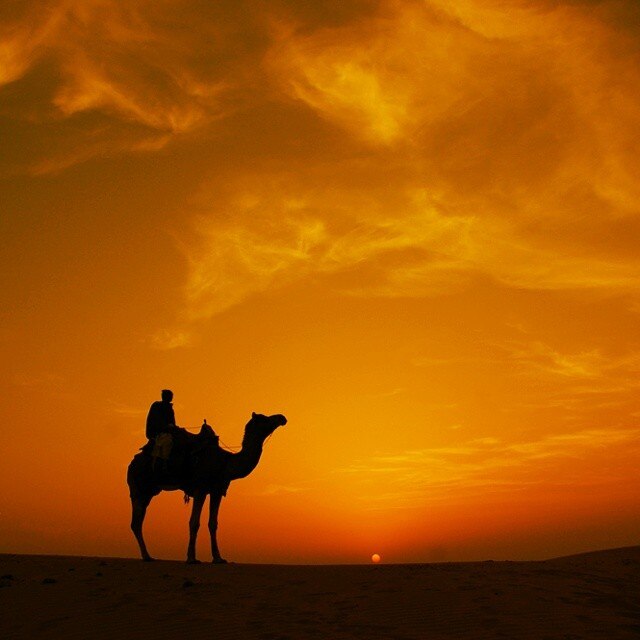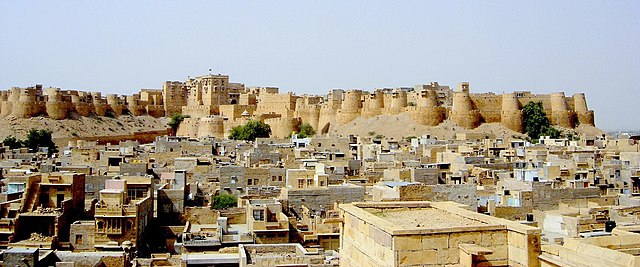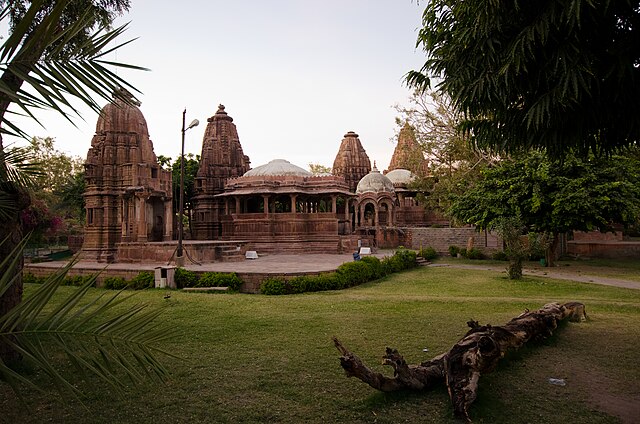Ever dreamed of stepping into a golden-hued fairy tale where history whispers through ancient forts, and the desert stretches endlessly under a starry sky? Jaisalmer, fondly called the Golden City, is that dream brought to life. Nestled in the heart of Rajasthan’s Thar Desert, this enchanting city blends royal heritage, vibrant culture, and breathtaking landscapes. Whether you’re a history buff, an adventure seeker, or someone craving a peaceful escape, Jaisalmer has something magical for everyone. Let’s dive into the must-visit places in Jaisalmer that’ll make your trip unforgettable!
Why Jaisalmer Should Be on Your Travel List
Jaisalmer isn’t just a destination; it’s an experience that wraps you in its golden embrace. Imagine wandering through a living fort where people still live, shop, and pray, or riding a camel across dunes as the sun paints the sky in fiery hues. The city’s rich history, dating back to the 12th century, is etched into its sandstone architecture, while its desert charm offers adventures you won’t find anywhere else. From UNESCO World Heritage Sites to hidden gems, Jaisalmer is a treasure trove waiting to be explored.
Jaisalmer Fort: The Heart of the Golden City
Picture this: a massive fort rising like a golden mirage from the desert, its sandstone walls glowing under the sun. Jaisalmer Fort, also known as Sonar Quila (Golden Fort), is a living fort where history and daily life intertwine. Built in 1156 AD by Raja Rawal Jaisal, this UNESCO World Heritage Site is one of the largest forts in the world. As you step through its grand gates, you’re greeted by narrow lanes bustling with shops, cafes, and ancient havelis. The fort’s Raj Mahal, with its intricate carvings, and the Laxminath Shrine are must-sees. Pro tip: Visit at sunrise for a magical view of the city bathed in golden light.
Tips for Visiting Jaisalmer Fort
Entry to the fort is free, but the palace museum charges INR 250 for foreigners and INR 50 for Indians, with extra for cameras. A self-guided audio tour is a great way to soak in the history without rushing. Spend at least 2-3 hours exploring, and don’t miss the rooftop cafes for panoramic views. Wear comfortable shoes—those cobbled lanes can be tricky!
Patwon Ki Haveli: A Glimpse of Royal Opulence

Ever wondered what it’s like to live in a mansion straight out of a royal saga? Patwon Ki Haveli, a cluster of five intricately designed havelis, gives you that chance. Built in the 19th century by wealthy trader Guman Chand Patwa, this architectural marvel is a showcase of Rajasthani craftsmanship. The golden sandstone facade, adorned with delicate mirror work and jharokhas (balconies), feels like stepping into a painting. Each haveli has its own story, with interiors that dazzle with frescoes and carvings. It’s a photographer’s paradise and a history lover’s dream.
Exploring Patwon Ki Haveli
Open from 8 AM to 6 PM, the entry fee is around INR 100 for Indians and INR 250 for foreigners. A guided tour can help unravel the haveli’s stories, but you can also explore at your own pace. Don’t miss the museum inside, which displays artifacts from the Patwa family’s era. Pair your visit with a stroll through the nearby bazaars for some local shopping.
Sam Sand Dunes: Where the Desert Comes Alive
Ready for a desert adventure that feels like a scene from an epic movie? Sam Sand Dunes, about 40 km from Jaisalmer, is where the Thar Desert shows off its magic. These golden dunes, rising 30-60 meters, create a surreal landscape perfect for camel safaris, jeep rides, or simply soaking in the sunset. As the sun dips below the horizon, the sky explodes in shades of orange and pink, making it one of the most romantic spots in Jaisalmer. Stay overnight in a desert camp for folk music, dance, and stargazing under a blanket of stars.
Desert Safari Tips
Book your safari in advance, especially during peak season (October-March). Camel safaris cost INR 500-2000, while overnight camping ranges from INR 5000-9000. Carry sunscreen, a hat, and water, as the desert sun can be intense. For a quieter experience, visit during sunrise instead of sunset to avoid crowds.
Gadisar Lake: A Serene Oasis in the Desert
In the middle of an arid desert, a shimmering lake surrounded by temples feels like a miracle, doesn’t it? Gadisar Lake, built in the 14th century by Raja Rawal Jaisal, was once the city’s lifeline. Today, it’s a peaceful spot for boat rides, birdwatching, and catching stunning sunrises. The lake’s ghats, dotted with shrines like the Krishna Temple, add a spiritual vibe. Whether you’re feeding fish or simply strolling along the banks, Gadisar’s tranquility is a perfect escape from the city’s hustle.
Things to Do at Gadisar Lake
Boating costs around INR 100-200 per person. Visit during the Gangaur Festival (March-April) for a vibrant cultural experience. The laser show in the evening is a must-see, blending history with modern storytelling. Bring binoculars if you’re a birdwatcher—migratory birds flock here in winter.
Jain Temples: Architectural Marvels Inside the Fort
Tucked within Jaisalmer Fort’s walls are seven Jain Temples, each a masterpiece of Dilwara-style architecture. Built between the 12th and 15th centuries, these temples are dedicated to Jain Tirthankaras like Rikhabdevji and Shambhavdev Ji. The intricate carvings of animals, sages, and deities on yellow sandstone are jaw-dropping. The temples’ serene ambiance offers a spiritual retreat, and the small library, Gyan Bhandar, houses ancient manuscripts. If you’re into history or architecture, these temples are a must-visit.
Visiting the Jain Temples
Open from 8 AM to 12 PM, entry is free for Indians (INR 50 for cameras), while foreigners pay INR 250. Dress modestly, covering shoulders and legs, as these are active places of worship. A guide is recommended to understand the temples’ significance, but the beauty alone is worth the visit.
Kuldhara Village: The Haunted Hamlet

Ever felt a chill down your spine while exploring a ghost town? Kuldhara Village, 18 km from Jaisalmer, is an abandoned settlement shrouded in mystery. Once home to Paliwal Brahmins, it was deserted overnight in the 19th century, possibly due to water scarcity or oppression by a local minister. The eerie ruins, with crumbling houses and a lonely temple, spark tales of curses and ghosts. Walking through Kuldhara feels like stepping into a suspense novel—perfect for thrill-seekers and history enthusiasts.
Exploring Kuldhara
Entry costs INR 10-50, with an additional fee for vehicles. Visit in the early morning or late afternoon to avoid the heat. The site takes about 1-2 hours to explore. Keep an open mind for the spooky legends, but don’t expect paranormal proof—just enjoy the haunting vibe!
Bada Bagh: Royal Cenotaphs with a View
Imagine a garden of golden cenotaphs set against a desert backdrop, glowing at sunset. Bada Bagh, meaning “big garden,” is a collection of chhatris (cenotaphs) built for Jaisalmer’s royal family. Located on a hill, it offers stunning views and a glimpse into the city’s regal past. The intricate carvings and serene setting make it a favorite for photographers. Visit in the evening to catch the sunset—it’s like watching the desert come alive in golden hues.
Bada Bagh Tips
The entry fee is INR 100-150, and the site is open from 8 AM to 6 PM. No guide is needed, but comfortable clothing and water are a must, as there’s some walking involved. Pair your visit with a trip to nearby Vyas Chhatri for a double dose of sunset magic.
Vyas Chhatri: The Sunset Point of Jaisalmer
Looking for the perfect spot to watch the desert sky turn into a canvas of colors? Vyas Chhatri, a Brahmin cemetery with beautifully carved cenotaphs, is Jaisalmer’s go-to sunset point. Dedicated to sage Ved Vyaas, the chhatris glow golden as the sun sets, with Rajasthani tunes on the algoza (a double-fluted instrument) adding to the ambiance. It’s a soul-stirring experience that blends history, architecture, and nature.
Visiting Vyas Chhatri
Entry is around INR 100, and the site is open all day, but sunset (4-7 PM) is the best time to visit. Bring a camera for Instagram-worthy shots, and don’t be shy to chat with locals playing music—it’s a great way to soak in the culture.
Salim Singh Ki Haveli: A Peacock-Shaped Marvel
Ever seen a building that looks like a ship or a peacock? Salim Singh Ki Haveli, built in the 17th century, is famous for its unique roof shaped like a peacock’s tail. The haveli’s 38 balconies, each with distinct carvings, and sandstone tuskers at the entrance are a testament to Rajasthani artistry. Named after a powerful minister, this haveli is a blend of grandeur and intrigue, with tales of ambition woven into its walls.
Exploring Salim Singh Ki Haveli
Open from 8 AM to 6 PM, entry costs INR 100-150. The haveli is near Jaisalmer Railway Station, making it easy to reach. Spend about an hour exploring, and don’t miss the vibrant paintings inside, crafted with gold leaf. It’s a quick but captivating stop.
Desert National Park: Wildlife in the Thar

Who says deserts are lifeless? Desert National Park, spanning 3162 sq km, is a haven for wildlife like chinkaras, desert foxes, and the endangered great Indian bustard. Located near Jaisalmer, it’s a paradise for nature lovers and birdwatchers, especially in winter when migratory birds visit. A jeep safari through the dunes and scrublands feels like an adventure into the wild heart of the Thar.
Tips for Desert National Park
Entry fees vary (INR 100-300), and safaris cost extra. Book a guided tour for the best experience, as the park is vast. Visit between October and March for pleasant weather and wildlife sightings. Carry binoculars and a camera for a memorable outing.
Tanot Mata Temple: A Symbol of Faith and Valor
Ever heard of a temple that withstood bombs during a war? Tanot Mata Temple, 120 km from Jaisalmer, is a sacred site near the 1971 Indo-Pak war’s Longewala battleground. Locals believe the goddess protected soldiers, and the temple’s history is awe-inspiring. The 2.5-hour drive through the desert is an adventure, but the spiritual vibe and tales of miracles make it worth it.
Visiting Tanot Mata Temple
The temple is free to enter, but carry food and water, as facilities are limited. Visit early to avoid crowds, and respect the temple’s sanctity by dressing modestly. Combine it with a trip to the Longewala War Memorial for a full day of exploration.
Jaisalmer War Museum: Honoring Heroes
Want to feel a surge of patriotism? The Jaisalmer War Museum, located at the military base, pays tribute to soldiers of the 1965 and 1971 Indo-Pak wars. Exhibits of weapons, uniforms, and stories from the Battle of Longewala bring history to life. The sound and light show at 7 PM is a moving experience, blending pride and emotion under the desert sky.
Tips for the War Museum
Entry is free, and the museum is open from 9 AM to 6 PM. Allow 1-2 hours for the visit, and don’t miss the evening show. It’s a great spot for families and history enthusiasts, but photography may be restricted in some areas, so check beforehand.
Shopping in Jaisalmer: Bazaars and Souvenirs
What’s a trip without a little retail therapy? Jaisalmer’s bazaars, like Sadar Bazaar and Bhatia Bazaar, are bursting with color and culture. From mirror-work dupattas to silver jewelry and camel leather juttis, you’ll find treasures to take home. Sonaron Ka Baas is a must for jewelry lovers, while Pansari Bazaar’s puppets are perfect souvenirs. Bargaining is part of the fun, so channel your inner haggler!
Shopping Tips
Most bazaars are open from 10 AM to 8 PM. Carry cash, as small shops may not accept cards. Visit Seema Gram for government-approved shops with fair prices. Don’t miss trying local snacks like kachoris while shopping—it’s a delicious way to refuel!
Best Time to Visit Jaisalmer

Timing is everything, right? The best time to visit Jaisalmer is from October to March, when the weather is cool (15-25°C) and perfect for sightseeing and desert safaris. February’s Desert Festival is a bonus, with camel races, folk performances, and vibrant markets. Avoid summer (April-August) unless you’re ready to brave the scorching heat. Monsoons (September-October) are quieter but can be humid.
How to Get Around Jaisalmer
Getting around Jaisalmer is a breeze, even if Uber and Ola aren’t available. Auto-rickshaws and taxis are affordable, with fares starting at INR 50 for short trips. For longer journeys, like to Sam Sand Dunes, book a taxi through your hotel (INR 800-4500 per day). Walking is ideal for exploring the fort and nearby havelis, but wear comfy shoes for those uneven streets!
Conclusion: Why Jaisalmer Will Steal Your Heart
Jaisalmer is more than a city; it’s a journey through time, where every corner tells a story of valor, art, and desert magic. From the golden glow of Jaisalmer Fort to the haunting ruins of Kuldhara, each place offers a unique piece of Rajasthan’s soul. Whether you’re chasing sunsets at Sam Sand Dunes or marveling at the intricate carvings of Patwon Ki Haveli, Jaisalmer promises memories that linger long after you leave. So, pack your bags, grab your camera, and let the Golden City cast its spell on you. Where will your Jaisalmer adventure begin?
Frequently Asked Questions (FAQs)
1. What is the best time to visit Jaisalmer?
The ideal time is October to March, when the weather is pleasant for sightseeing and desert activities. February’s Desert Festival adds a cultural highlight.
2. How many days are enough for Jaisalmer?
A 2-4 day trip is perfect to cover major attractions like Jaisalmer Fort, Patwon Ki Haveli, Sam Sand Dunes, and Kuldhara. Add a day for offbeat spots like Tanot Mata Temple.
3. Is Jaisalmer safe for solo travelers?
Yes, Jaisalmer is generally safe for solo travelers. Stick to well-known areas, book safaris through reputable operators, and avoid isolated spots at night.
4. What should I pack for a Jaisalmer trip?
Pack light, breathable clothes, sunscreen, a hat, comfortable shoes, and a water bottle. For desert safaris, carry a scarf for dust and a jacket for chilly nights.
5. Are there budget-friendly accommodations in Jaisalmer?
Absolutely! From hostels like Zostel Jaisalmer to budget hotels and desert camps, options start at INR 500-2000 per night, offering great value.

